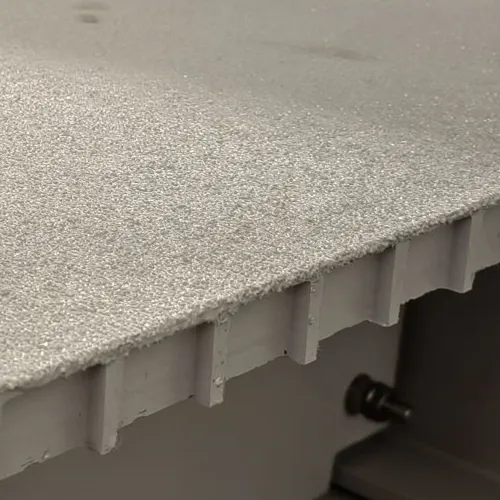loading...
- No. 9, Xingyuan South Street, Dongwaihuan Road, Zaoqiang County, Hengshui, Hebei, China
- admin@zjcomposites.com
- +86 15097380338
- Welcome to visit our website!
frp pressure vessel tank
Understanding FRP Pressure Vessels and Tanks
Fiberglass Reinforced Plastic (FRP) pressure vessels and tanks have gained significant traction in various industries due to their superior strength, durability, and resistance to corrosion. Made from a composite material consisting of a polymer matrix reinforced with fibers, typically glass, FRP vessels are designed to withstand high pressure and provide reliable storage solutions for liquids and gases.
Advantages of FRP Pressure Vessels
One of the primary advantages of FRP over traditional materials such as steel or aluminum is its remarkable resistance to chemical corrosion. Industries that deal with aggressive substances, such as the chemical, oil and gas, and wastewater sectors, find FRP tanks particularly beneficial. The composite nature of FRP allows for custom formulations that can withstand specific corrosive environments, ensuring longer service life and reduced maintenance costs.
Another significant benefit is the lightweight nature of FRP. Compared to steel, FRP is significantly lighter, which translates into easier handling and installation. This feature also reduces transportation costs and supports the growing trend of using modular construction techniques in various projects. The lightweight characteristic alongside its high strength makes FRP vessels an excellent choice for applications where weight restrictions are critical, such as mobile platforms and offshore installations.
Additionally, FRP tanks and pressure vessels are designed to offer exceptional thermal insulation properties. This feature is crucial for applications that involve temperature-sensitive materials. By reducing heat transfer, FRP can help maintain the desired temperature of the contents, which is essential in many industrial processes.
Manufacturing Process of FRP Vessels
frp pressure vessel tank

The manufacturing process of FRP pressure vessels involves several key steps. First, a mold is created, which is typically a negative of the desired final product. The next step involved is the application of resin and reinforcement fibers onto the mold. The combination of heat and pressure is then applied to cure the structure, creating a robust vessel that can handle substantial internal pressures.
Quality control during the manufacturing process is crucial. Each vessel must undergo rigorous testing, including hydrostatic tests, to ensure it meets safety and performance standards. Compliance with international standards, such as those established by the American Society of Mechanical Engineers (ASME) and the American National Standards Institute (ANSI), is mandatory for many applications, especially in sectors that prioritize safety.
Applications of FRP Pressure Vessels
FRP pressure vessels and tanks are utilized in a myriad of applications. In the chemical manufacturing industry, they are employed to store reactive chemicals safely. Water treatment facilities use FRP tanks to hold corrosive substances necessary for treating water. Additionally, the food and beverage industry benefits from FRP vessels for storing various ingredients that require strict hygiene standards, as FRP can be manufactured to be non-reactive.
In the oil and gas industry, FRP vessels are used for both storage and as part of complex processing systems due to their light weight and resistance to harsh conditions. They can be found in offshore platforms, where both space and weight optimization are crucial for operational efficiency.
Conclusion
The shift towards FRP pressure vessels and tanks marks a significant evolution in storage and processing technology across industries. Their durability, lightweight properties, and chemical resistance make them an ideal solution where traditional materials might fail. As industries continue to seek innovative methods to enhance productivity and reduce costs, FRP technology is likely to become even more prevalent, reshaping the landscape of pressure vessel solutions for years to come.
-
Transform Your Spaces with FRP Grating SolutionsNewsNov.04,2024
-
The Versatility and Strength of FRP RodsNewsNov.04,2024
-
The Excellence of Fiberglass Water TanksNewsNov.04,2024
-
The Benefits of FRP Grating for Your ProjectsNewsNov.04,2024
-
Elevate Your Efficiency with FRP Pressure VesselsNewsNov.04,2024
-
Welcome to the World of FRP Pressure VesselsNewsOct.12,2024
-
Unveiling the Future of Filtration: Why FRP Filter Vessels are a Game ChangerNewsOct.12,2024
